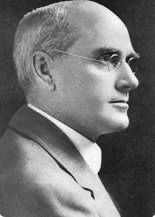Quixote Foundation
More Family History
 For history buffs it may be entertaining to trace Quixote Foundation’s heritage back a hundred years or so to Clarence Addison Shaler, who was Stuart Hanisch’s grandfather. Stuart described Clarence as “kind of a giant wizard of oz,” and what we know about him suggests maybe we’re not the wackiest kids in the family after all.
For history buffs it may be entertaining to trace Quixote Foundation’s heritage back a hundred years or so to Clarence Addison Shaler, who was Stuart Hanisch’s grandfather. Stuart described Clarence as “kind of a giant wizard of oz,” and what we know about him suggests maybe we’re not the wackiest kids in the family after all.
As a child living on his family’s farm, Clarence invented a feline treadmill and harnessed a bunch of barn cats to it—using their power to churn the family’s butter so he wouldn’t have to do the chore himself. From the late 1800s through the 1920s, he generated a fortune manufacturing his own inventions: a better umbrella, tire patches and headlights for the first automobiles, heating pads and much more. He was a sculptor who didn’t want to be paid for his work, saying the happy experience of creating each piece was reward enough. Ironically, not caring much about money protected the family’s wealth, as Clarence’s conservative investments were largely untouched by the 1929 stock market crash.
Clarence did care intensely about the decline of Native American populations and their well-being. He described them as having all but “totally disappeared” in Wisconsin during his lifetime, and spent $50,000 to commission the iconic bronze statue “The End of the Trail” because he hoped it would convey “a slight tribute to their memory.”
Clarence’s daughter Marian and her husband, Arthur Hanisch, were Stuart’s parents. They extended the family’s reach into pharmaceuticals and woolen mills (1950s enthusiasts: they invented bobby socks) and combined those interests (oddly, really) by patenting a knit aortal transplant.
While we try not to draw a line too literally from the foundation’s current personality back through prior generations, it’s hard not to notice some family trends: inventive risk-taking, evaluating success with measures like “happiness,” believing injustice for anyone is a personal affront to everyone, caring less about money itself than about the good money can do, being what can generously be described as “quirky”…. To grossly misquote Abe Lincoln, “We’re lucky to know our heritage and now it’s time to find out what our generation will be.”